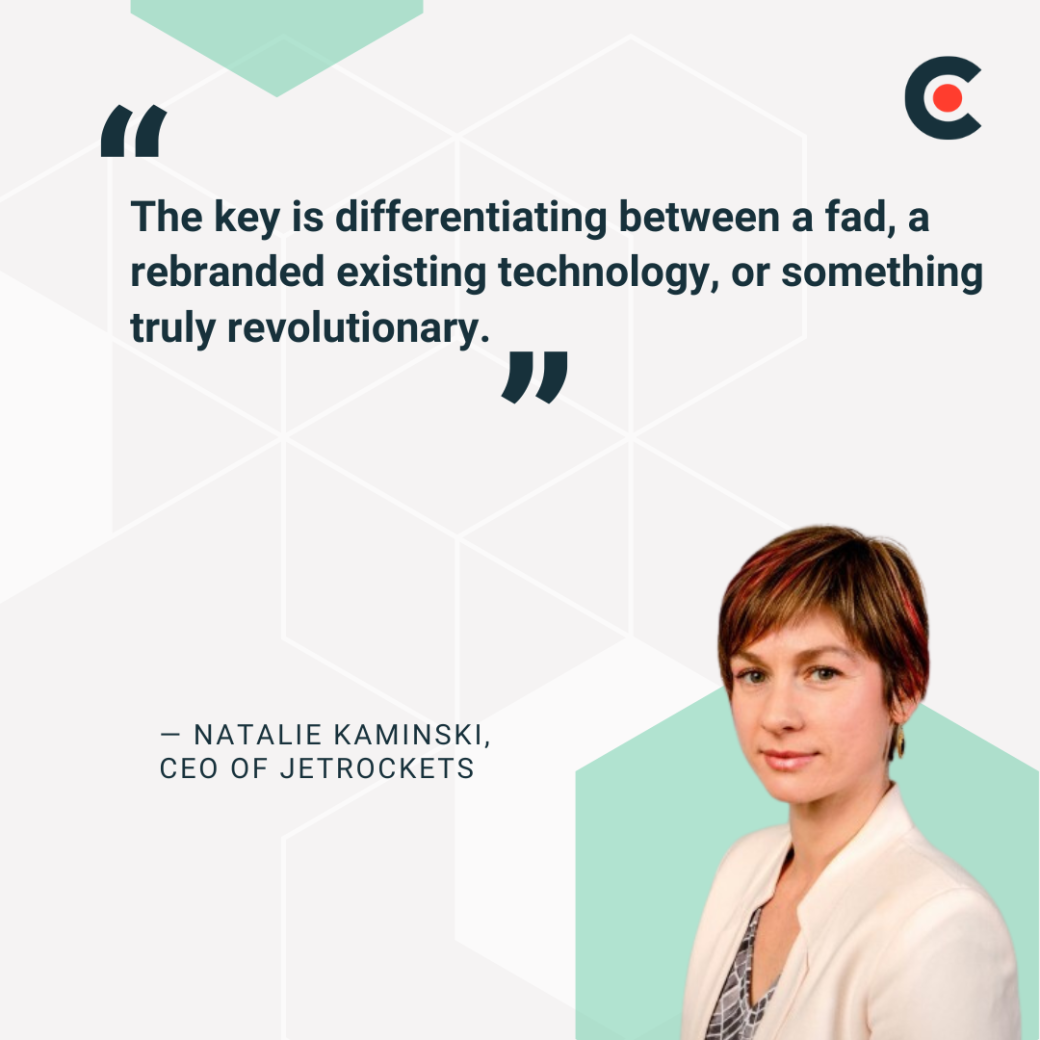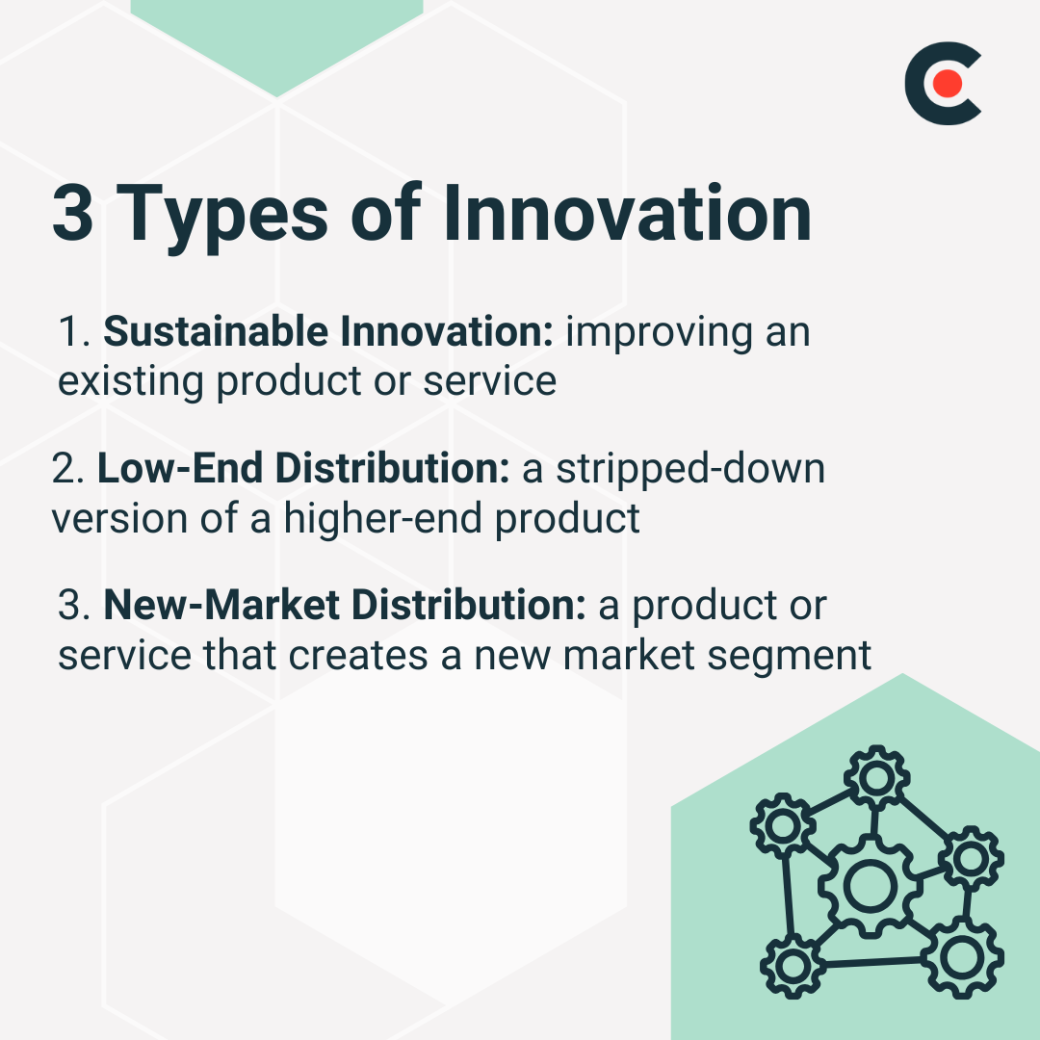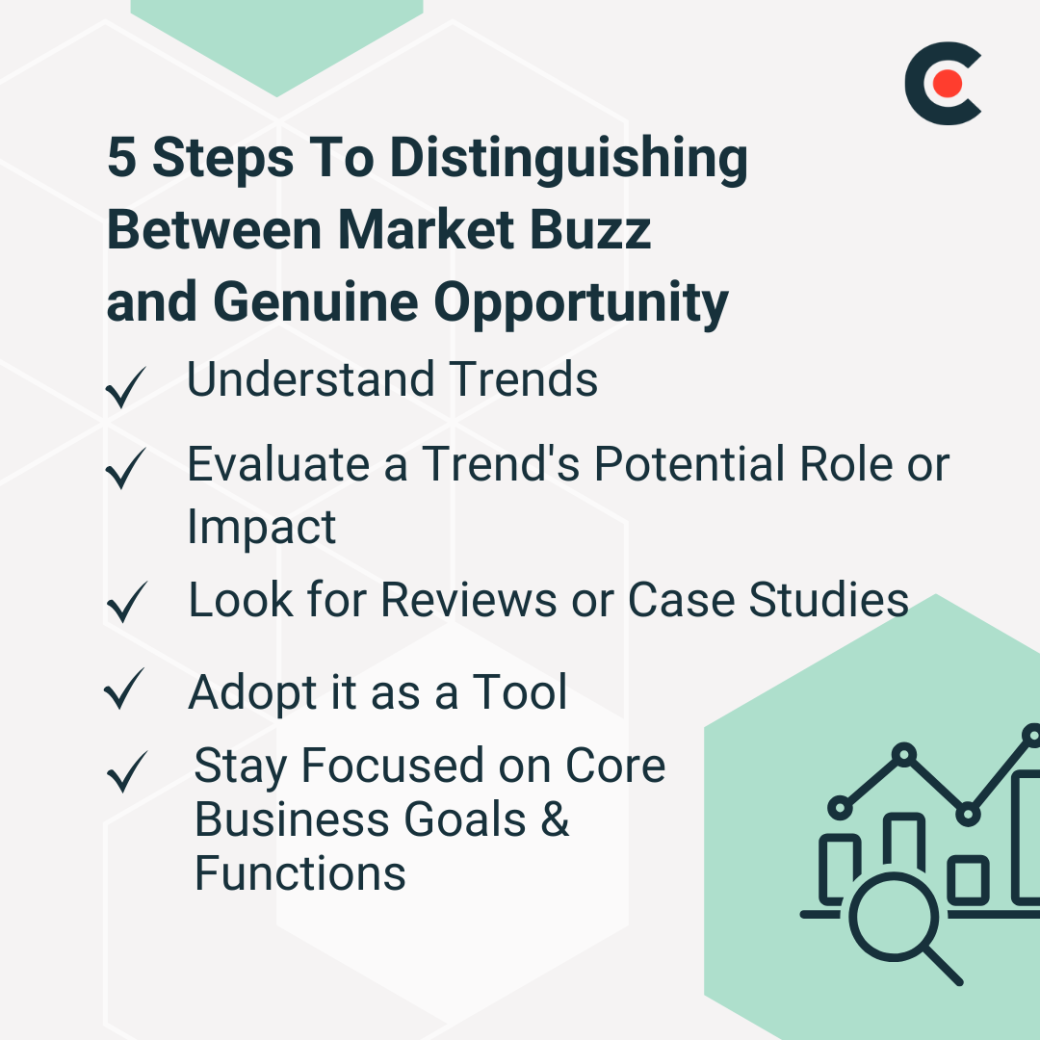

Updated March 14, 2025
Some market buzz is mostly hype, but there can be real innovation behind it, according to Natalie Kaminski, CEO of JetRockets. The key is learning to dig through the hype, find what's revolutionary, and build on that foundation with knowledge and imagination.
Identifying and seizing the right opportunity can transform your business and fast-track your growth. The reality is that some developments may seem like great opportunities at first but in time, unfortunately, turn out to be just hype. When the smoke inevitably clears, companies that bought into that seemingly irresistible buzz face the harsh truth as they come crashing down as fast as they rocketed up.
The internet has made it increasingly difficult to tell genuine opportunities from passing trends. Every step forward seems to generate market buzz, complete with experts writing about where these new technologies can take us.
Looking for a Digital Marketing agency?
Compare our list of top Digital Marketing companies near you
Genuine opportunities are out there, but finding them requires a commitment to research and myth-busting. If you can sift through the hype and see what's truly transformative, you have a better chance of taking your business to the next level.
Natalie Kaminski, CEO of JetRockets, highlights how we can decipher what’s real when generating buzz for your business.
If you dig into most market buzz, you'll find a base technology that has been around for years. The "next big thing" is often yesterday's news in a new package. A closer look at that package reveals a small but significant breakthrough that someone has overblown. They claim the new development will change everything.
That buzz can lead businesses down a dangerous path, especially if those that eagerly jumped in without doing their due diligence. It's essential to examine each technology's history to determine whether it's genuinely innovative or just the next logical step in development.
If you only pay attention to mainstream media, you might assume artificial intelligence (AI) emerged two or three years ago, with ChatGPT leading the way.
Natalie Kaminski, sharing her experience with rebranded technologies, says, “It's almost amusing when people market everything as 'AI-driven' now - it's like saying you're using electricity or the internet."
“It's similar to how 'big data' and data warehousing have been around for 30 years,” Kaminski adds. “The key is differentiating between a fad, a rebranded existing technology, or something truly revolutionary.”

ChatGPT is a valuable resource, but it's far from the launching pad for AI. The first example of modern AI dates back to 1951 when two computer scientists, Marvin Minsky and Dean Edmunds, built a network that modeled human learning.
Since then, AI has gone through its share of breakthroughs and slowdowns. The AI boom of the 1980s drew millions in investments until experts started warning that expectations were too high. One Yale professor asked, "Suppose that five years from now, the strategic computing initiative collapses miserably as autonomous vehicles fail to roll." The answer was an "AI winter" that halted AI development for years. That should sound familiar to most followers of 21st-century AI.
Experts have valued the generative AI market at $16.87 billion and predict 37.6% growth over the next five years. Applications range from data processing and content personalization to fraud detection.
However, some experts predict that nearly a third of generative AI projects will fail, often because they don't deliver value equivalent to their hype. Meanwhile, less flashy AI solutions quietly drive business value, frequently representing the biggest opportunities.
Reality-checking trends like AI is one key way businesses can save themselves from the Pied Piper of market buzz. When you avoid over-investing in hype, you have more resources to pursue what's real.
AI is only one scenario where opportunity hides behind market buzz. Multiple innovations have emerged from intense hype, from 3D printing to wearable fitness trackers.
Becoming a market leader means identifying these opportunities before they become mainstream. The first step is learning to recognize revolutionary potential.
According to Harvard Business School experts, there are three types of innovation:

Given the high barrier to entry, sustaining innovation opportunities tend to be out of reach for smaller and mid-size companies. However, when these developments do occur, they often translate to low-end and new-market innovations.
The more you know about these disruption types and how they differ, the better prepared you'll be to identify opportunities when they arise.
New market and low-end innovations often look similar. They generally target lower-spending customers and take advantage of service gaps, but they arise for different reasons and affect the market differently. Understanding those differences can help you identify an opportunity when it presents itself.
Low-end disruptions change the market by offering a more affordable product with basic functionality. They typically target customers for whom existing options are too expensive. These customers are interested, but current vendors have priced them out of the possibility.
One well-known example is Airbnb, which began when two young designers rented floor space to conference attendees in their San Francisco apartment. They offered air mattresses and food in the morning — hence "Air Bed and Breakfast," or Airbnb.
Today, Airbnb has over 8 million active listings and has welcomed over 2 billion guests. The co-founders are still in charge, and the hospitality market has never been the same. The possibility of less expensive lodging has reduced hotel revenues in many markets, forcing hotels to compete differently.
Hilton's new commercial showcases this disruption. A child plays in a private but dirty pool as the announcer promotes Hilton, using the tagline "When you'd rather enjoy the pool than clean someone else's." The commercial emphasizes what Airbnb might not offer: service and reliable quality.
While low-end opportunities provide a new option to budget-conscious customers, new market opportunities create a new type of service altogether.
New market disruption requires an untapped market that can't access a particular product type. Innovative businesses create new products for these excluded customers, generating revenue that wouldn't exist otherwise.
Take Zipcar, a car-sharing service for users who occasionally need a car but prefer not to own one or cannot afford one. These city dwellers benefit from cheaper transportation, less long-term responsibility, and more access to non-transit-accessible destinations.
It's been 22 years since Zipcar's car-sharing model created a new market segment in transportation. According to the company's 2023 Impact Report (the most recent version available), 73% of Zipcar members either dispensed with or put off buying a car because of Zipcar.
To identify these kinds of opportunities, businesses must find excluded buyers. These are people an existing industry hasn't attempted to capture because they aren't profitable under the current system. Market entrants enjoy unrestricted access to these unreached customers until the project's success inspires copycats.
Part of being an innovator is keeping your finger on the pulse of your industry. When that pulse quickens, you have two choices: jump on board or step back and assess.
Stepping back can feel like hesitation. You don't want to miss an opportunity, but acting too quickly can be even more damaging. It's important to approach new developments critically and distinguish real opportunities from market buzz.

Hype follows a pattern, so much so that analysts have developed a map called the Gartner Hype Cycle, an analysis system for evaluating market trends. The Hype Cycle tracks the development of early technologies and what happens to early adopters, tracking which innovations thrive or fail.
The Hype Cycle identifies five key points in a tech innovation's development. They are:
In 2024, Gartner released its latest Hype Cycle for Emerging Technologies. The graph looks like all other hype cycles. A sharp peak becomes more gradual before dropping off.
This Hype Cycle heavily features AI, which Gartner believes is entering the disillusionment phase. The numbers suggest a plateau in about two to five years, but likely not before more ambitious, less well-researched applications fail.
Companies need to identify profitable applications early to innovate in any emerging space.
Taking the time to research a trend is vital for protecting your capital. While others risk their assets by jumping in too soon, you build your knowledge of the emerging trend. When you enter the market, you do so more intelligently and with more expertise.
As applications of a new or upgraded technology reach the market, consumer reactions put them to the test. Study these reactions and companies' responses to them.
If it's a consumer product or publicly available business-to-business (B2B) technology, look for reviews on sites like Clutch. Niche influencers may also share reviews.
Some applications will have formal case studies. You can find these in industry publications or by Googling the technology plus the phrase "case studies," such as "generative AI case studies" or "digital immune system case studies."
If you find an advancement has real applications for your industry, consider how you can implement it without abandoning your existing business model. Ask yourself how the new technology can enhance what you already offer or help your team work better.
For example, generative AI has well-known applications in writing and content creation. Grammarly, an established grammar and usage checker, has incorporated many of these uses as add-ons without altering its core business.
Not every company is such a perfect fit for a particular innovation. If that's the case, consider how you might incorporate the new technology into your existing stack. McKinsey researchers recommend focusing on trends that offer as many of the following as possible:
You don't need all four, just enough to tip the scale in the tool's favor. If it works, you can always improve it.
Even a high-potential opportunity can be disastrous if it unmoors its adopters. Before launching any trend-driven innovation, be sure it fits your existing business model. No trend is worth abandoning your customers and what you want to achieve.
“Today, we suggest AI capabilities to existing clients because it's more accessible and can enhance their platforms,” Kaminski shares her insights, reminding businesses to stay true to their goals. “But we're not dropping our core focus to chase AI exclusively - it's just another utility in our toolkit.”
If a promising trend seems relevant to your business model, create an integration plan. Analyze market potential and develop a strategy as you would with any new pursuit.
Before acting on a trend, dig deeper and learn if there's something genuinely new behind it. Hype is often simple smoke and mirrors, especially in the tech industry.
If market buzz reflects a real advancement or emerging need, consider the opportunity it presents. Ask yourself whether there's an untapped market or a chance to make something more mainstream. Meanwhile, keep following developments in the market, focusing on what options are succeeding and failing.
Most importantly, stay true to your mission and keep pursuing what works. Avoid abandoning your entire processes and efforts to try something new. Letting your successes drive your pursuit of new opportunities will set you up for safer, sustainable growth.

Natalie Kaminski, CEO of JetRockets, is a tech entrepreneur with a knack for bridging the gap between non-tech founders and the digital world. With a journey spanning multiple countries and roles—from programmer to COO—she brings a wealth of hands-on experience in turning tech ideas into reality. At JetRockets, she leads a global team that specializes in helping non-tech businesses launch successful tech platforms, ensuring they're well-built, user-friendly, and perfectly aligned with business goals. Natalie's passion is guiding founders through the intricacies of the tech landscape, from ideation to launch and beyond.


